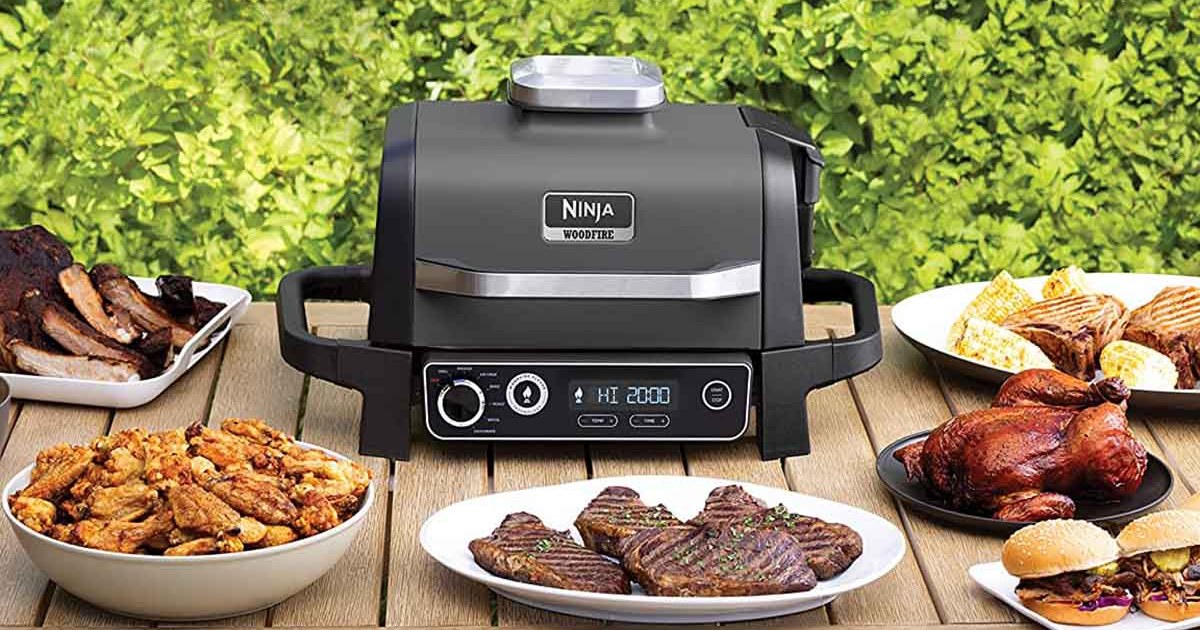
Are you considering the Ninja Woodfire Grill (OG751) for your next outdoor cooking adventure? 🍖🔥 This versatile 7-in-1 device has been making waves in the grilling community, but before you hit that ‘Buy Now’ button, there are a few things you should know. 🤔
1. Unpredictable Results with the Ninja Woodfire Grill 🎲
First things first, the Ninja Woodfire Grill (OG751) can produce unpredictable results. 😮 According to a review from Tom’s Guide, it requires some patience and a thermometer to get everything right. So, if you’re expecting perfection on your first try with the Ninja Woodfire Grill, you might be in for a surprise. It might not get everything exactly right the first time, or maybe even the second or third. So, be prepared for a bit of trial and error. 🔄
2. Ninja Woodfire Grill: Not for Large Gatherings 🎉
Planning to host a big backyard barbecue party? 🥳 The Ninja Woodfire Grill (OG751) might not be your best bet. The same review from Tom’s Guide mentioned that the grill cannot turn out large amounts of food quickly. This could be a challenge for those who want to use the Ninja Woodfire Grill for larger gatherings or parties. So, if you’re planning to feed a crowd, you might want to consider other options. 🍽️
3. Intense Smoke Flavor with the Ninja Woodfire Grill 😤
Love the smoky flavor in your grilled veggies? 🥦🍆 With the Ninja Woodfire Grill (OG751), you might get more than you bargained for. Some users on Amazon mentioned that the smoke flavor can be a bit intense, especially when cooking vegetables. They advised allowing the smoke to calm down a little during the preheating before adding the food. So, if you’re not a fan of strong smoky flavors, this is something to keep in mind. 🌫️
4. Learning Curve with the Ninja Woodfire Grill 📚
Every new gadget comes with a learning curve, and the Ninja Woodfire Grill (OG751) is no exception. 🎓 Some users mentioned that it takes some getting used to with the settings and cook time. High temperature is extremely high and can result in burnt food if not managed properly. So, be prepared to spend some time learning the ropes before you can master this grill. 🍳
5. Thermometer Limitations of the Ninja Woodfire Grill 🌡️
The Ninja Woodfire Grill (OG751) comes with a built-in thermometer, but according to some users, it’s only good if you’re cooking one piece of meat. An external tool would outperform it. So, if you’re planning to grill multiple pieces of meat at once, you might want to invest in a separate thermometer. 🥩
Conclusion 🏁
Despite these warnings, many users still find the Ninja Woodfire Grill (OG751) to be a good investment, especially for those with limited space. They appreciate its versatility and the flavor it adds to the food. However, it’s always a good idea to be aware of potential challenges before making a purchase. Happy grilling! 🍔🌭🍗
Remember, every grill has its pros and cons. The key is to find the one that best suits your needs and preferences. And who knows? The Ninja Woodfire Grill (OG751) might just be the perfect fit for you. 🎯🏆









